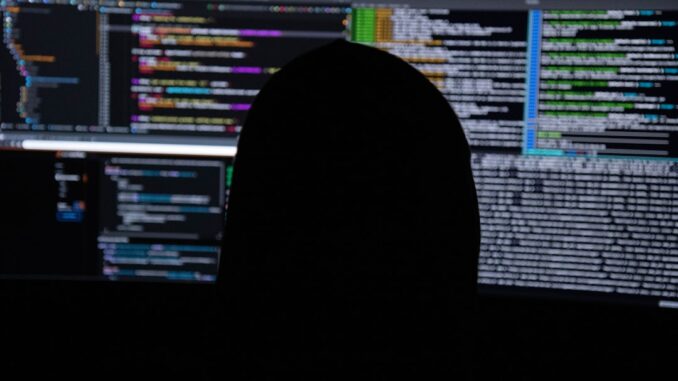
Summary
Schneider Electric, a global energy management giant, suffered a ransomware attack in November 2024, resulting in the theft of 44 GB of data. The Hellcat ransomware group demanded a ransom of $125,000 in baguettes, but Schneider Electric refused to pay. This refusal led to the public release of sensitive data stolen from the company’s internal systems.
Explore the data solution with built-in protection against ransomware TrueNAS.
** Main Story**
Schneider Electric Hit by Ransomware, Data Stolen
Schneider Electric, a multinational energy management and automation company, experienced a significant ransomware attack in November 2024. The Hellcat ransomware group claimed responsibility, stating they exfiltrated 44 gigabytes of compressed data, including sensitive user information, project details, and internal communications. This attack highlights the increasing vulnerability of even large, established companies to sophisticated cybercriminal activity and underscores the importance of robust cybersecurity measures.
The Baguette Ransom Demand
The Hellcat group’s ransom demand of $125,000, specifically to be paid in French baguettes, caught public attention due to its unusual nature. While initially perceived as a bizarre request, some security experts believe it was a strategic move to garner publicity for the relatively new ransomware group. Schneider Electric, however, rejected the demand, deeming it disrespectful, and activated its incident response team to investigate and contain the breach. This bold stance against the attackers, while commendable, unfortunately resulted in the subsequent release of some of the stolen data.
The Data Breach and its Aftermath
The stolen data, reportedly accessed through Schneider Electric’s Atlassian Jira system, included a substantial amount of user data, comprising approximately 400,000 rows of information. This breach compromised roughly 75,000 unique email addresses and the full names of both employees and customers. While Schneider Electric maintained that its core products and services remained unaffected by the incident, the data leak poses significant risks to the company and the individuals whose information was compromised. This incident serves as a stark reminder of the potential consequences of refusing ransom demands and the need for proactive cybersecurity measures to prevent such breaches from occurring in the first place.
The Importance of Cybersecurity
The Schneider Electric attack emphasizes the growing threat of ransomware and data breaches across all industries. Companies must prioritize cybersecurity by implementing robust defenses, regularly updating software and systems, and conducting thorough vulnerability assessments. A comprehensive incident response plan is also crucial to effectively manage and mitigate the damage caused by a successful attack. Investing in employee training and awareness programs can also help fortify defenses against social engineering and phishing attacks, which often serve as entry points for ransomware attacks.
Looking Ahead
As cyberattacks continue to evolve and become more sophisticated, companies must remain vigilant and adaptable in their cybersecurity strategies. A multi-layered approach, combining advanced security technologies with proactive risk management and continuous monitoring, is essential to safeguarding sensitive data and maintaining business continuity in today’s increasingly complex threat landscape. The Schneider Electric incident serves as a valuable lesson for other organizations to review and strengthen their own cybersecurity posture. It also highlights the evolving tactics of ransomware groups and the need for businesses to be prepared for unexpected and unusual demands.


The focus on incident response is critical. What specific steps do you think organizations should prioritize in their incident response plans to minimize the impact of data breaches following a ransomware attack?
That’s a great question! I think prioritizing data segmentation and regular, tested backups are crucial. Also, clear communication protocols both internally and externally can significantly reduce confusion and reputational damage during and after an incident. What are your thoughts on the role of threat intelligence in refining these plans?
Editor: StorageTech.News
Thank you to our Sponsor Esdebe
The attacker’s access via the Jira system underscores the risk posed by third-party applications. How can companies best manage the security of these interconnected systems and ensure prompt patching and updates to prevent similar breaches?
That’s a really important point. The Jira access highlights the need for rigorous third-party risk management. Regular security audits and penetration testing of interconnected systems are vital. Perhaps more companies could benefit from implementing zero-trust architecture principles to limit the blast radius of any potential breach. What methods have you found most effective?
Editor: StorageTech.News
Thank you to our Sponsor Esdebe
$125,000 in baguettes, you say? That’s a carb-heavy ransom! Besides the obvious logistical nightmare, how would you even *insure* a payment like that? Do we need a baguette futures market now?
That’s hilarious! The logistics *are* mind-boggling. A baguette futures market is an interesting thought! Perhaps that could hedge against the risk of spoilage? How long *do* you think they had to fulfill the demand?
Editor: StorageTech.News
Thank you to our Sponsor Esdebe
$125,000 in baguettes… I’m no economist, but wouldn’t that massively inflate the local boulangerie market? Were they planning a carb-fueled getaway, or was it a commentary on the company’s crusty security?
That’s a hilarious take! The thought of a carb-fueled getaway is certainly creative. It really does raise a valid point about the impact on the local economy, and the logistics that come with a ransom request like that. Maybe there’s an economics paper in this somewhere! Thank you for your input.
Editor: StorageTech.News
Thank you to our Sponsor Esdebe
Given the attack vector via Atlassian Jira, what specific authentication protocols were in place, and how might multi-factor authentication have altered the outcome?
That’s a crucial question! The Jira attack highlights potential weaknesses. Stronger authentication, like multi-factor, could have definitely added a significant hurdle for the attackers. It would be interesting to know if they bypassed existing MFA, or if it wasn’t fully implemented across all access points. What are your preferred MFA methods?
Editor: StorageTech.News
Thank you to our Sponsor Esdebe
$125,000 in baguettes – talk about a flaky situation! I wonder if Schneider Electric considered a counter-offer of croissants? It might have softened the blow or at least provided a tastier talking point.